At-Home Learning | Kindergarten | Grades 1-2 | Grades 3-4 | Grades 5-6 | Grades 7-8 | HMH At-Home Learning Hub
Check back here daily for new resources!
Featured Problems:
Rich, interesting problems are powerful tools for student learning. The questions here are open-ended. There may be multiple answers or multiple approaches. Make time for your students to discuss and compare their solutions, either with you or with others. We hope these problems will spark students’ curiosity and lead them to investigate new questions.

Make drawings or take pictures of different ways to make 2/3.
Things to Consider:
Engaging in this problem at home allows students to look for representations of fractions in their environment. For instance, a student could make a set with 2 red cups and 1 blue cup, or two brothers and one sister. Finding 2/3 of the distance across a room is another way they could illustrate 2/3. Encourage students to explain to someone how they know their drawings/pictures all show 2/3. Use questions like the following to encourage reflections and generalizations about 2/3. What do you notice about each of your drawings/pictures? How are they alike and how are they different?

I bought an item at a shop and got 35 cents change. What did I buy and how much did it cost?
Things to Consider:
As they investigate this problem about money, students might use addition, subtraction, or both, as they search for solutions. Have students share how they are thinking about the problem, and ask questions to encourage students to generate multiple possibilities. Can you think of other ways? How many ways can you think of? What if I spent over $5.00? $10.00? $20.00?

In my pocket I have $36. What bills might I have?
Things to Consider:
The numbers in this problem are not challenging. Children can focus their thinking on how they can organize their solutions so that they are certain they have found them all. Ask them to write a justification of how they are certain they have found all the possible solutions.

Two fractions add up to 1/2. What might those two fractions be?
Things to Consider:
Fractions are numbers and fostering students’ number sense with them is really important. When considering whether solutions are correct or not, encourage students to justify how they know the sum is equivalent to 1/2. For example, 2/10 + 3/10 = 5/10. How can you prove 5/10 is the same as 1/2? Additional questions are helpful to foster perseverance and generating many solutions. Can you think of other ways? How many ways can you think of? What do you notice about the numerators and denominators of the fractions you added? What patterns do you notice?

Two numbers multiply to make 360. One of them has a zero at the end. What might the two numbers be?
Things to Consider:
Some students may struggle to get started. It’s okay for them to quickly select two numbers to multiply (one with a zero at the end), and then determine the product. Ask, “How does that answer help you think about how you might change the numbers (factors) to get a product of 360?

I went to get $100.00 out of the bank. What are the different ways I can ask for this amount of bills?
Things to Consider:
This is a problem with many solutions. Students may initially think of solutions with only one type of bill, like 10 ten-dollar bills or five twenty-dollar bills. Encourage them to think about more solutions by asking if there is a way they could get at least one $50, $20, $10, $5 and $1.
Featured Videos:
Math Focus Problem: Fractions with M&M’s
Stephanie Elizondo shows you how to use M&M’s to explore fractions in this week’s featured math focus problem!
Notice & Wonder: Symmetry in the World
LaToya Major takes a notice/wonder walk around her neighborhood, looking for lines of symmetry in the world around her. What do you notice & wonder when you are out for a neighborhood walk?
Math in the Kitchen: A Recipe and a Half
What happens when you need to make a recipe and a half? We’re in the kitchen with Math Solutions Professional Learning Consultant Brandon Harms, turning dinner tacos into an exploration of proportions and ratios. What are you cooking tonight? Are you halving or doubling a recipe? Tell us in the comments below and share your own dinner math videos using #MathintheKitchen!
Math Games: Target 300
Stephanie Elizondo and her son Seth demonstrate how to play Target 300, a dice game that sharpens mathematical reasoning and thinking skills. Missing the dice at home? Try a virtual set! https://www.random.org/dice/
Math@Work: Math Meets Entrepreneurship
Watch Math Meets Entrepreneurship. Our student entrepreneurs—Angela Garcia, Timothy Coleman, Crystal Reynaga, and Mauro Palomo—present their business ideas to the the Sharks from the ABC® series Shark Tank: Barbara Corcoran, Mark Cuban, Lori Greiner, Robert Herjavec, Daymond John, and Kevin O’Leary!
New Normal: Engaging in Error Analysis
Hollie Hartford gives tips for math teachers engaging in remote learning while keeping the 5 pillars of mathematics in mind. Try error analysis with your students!
Math in the Kitchen: How Many Muffins?
If you’re following a recipe and you know the number of servings, what happens if you need double, triple, or quadruple the recipe? Christine Ramsey & her son Colton explore math while making muffins!
Questions? Click Here to Contact Us


